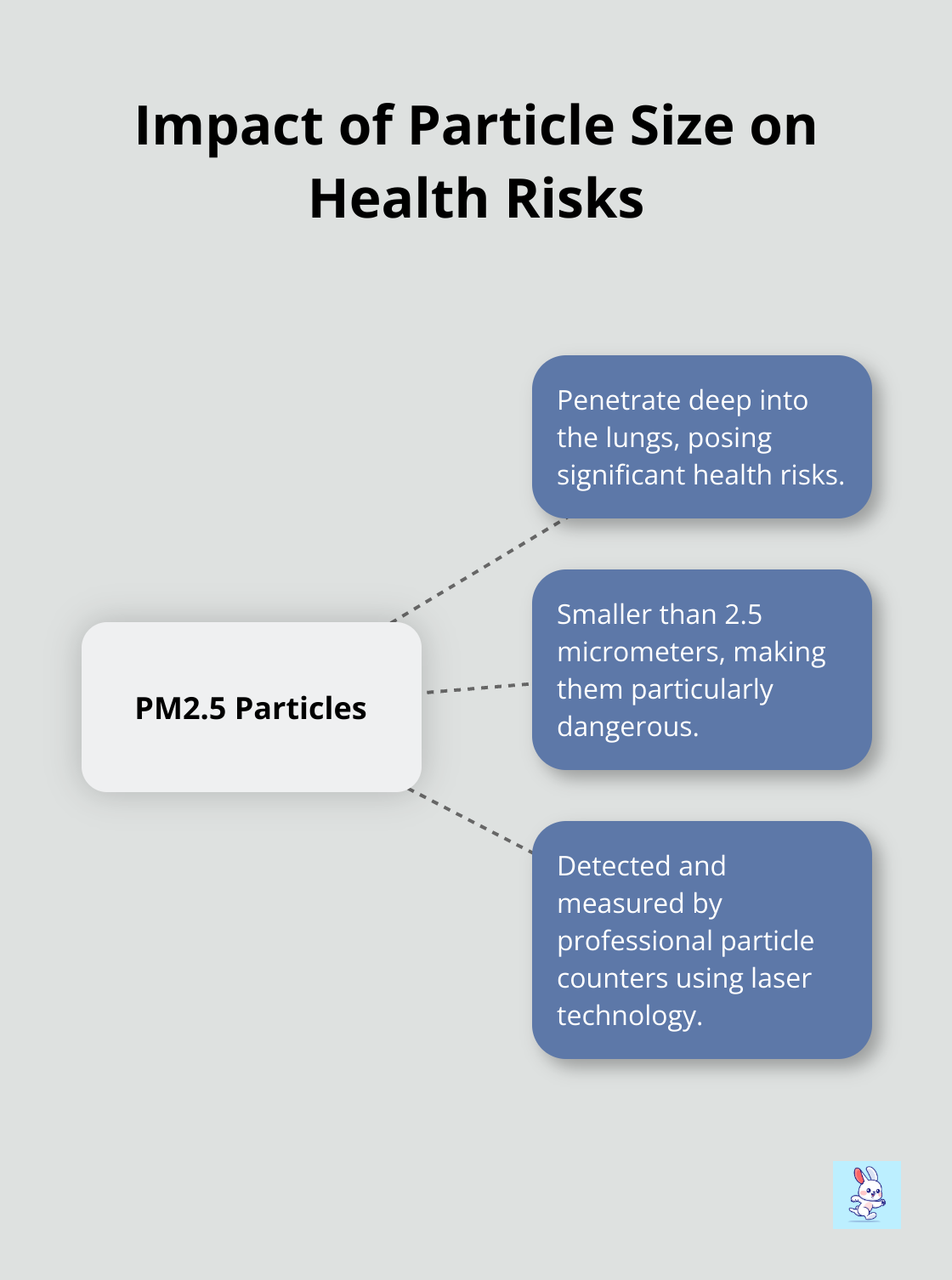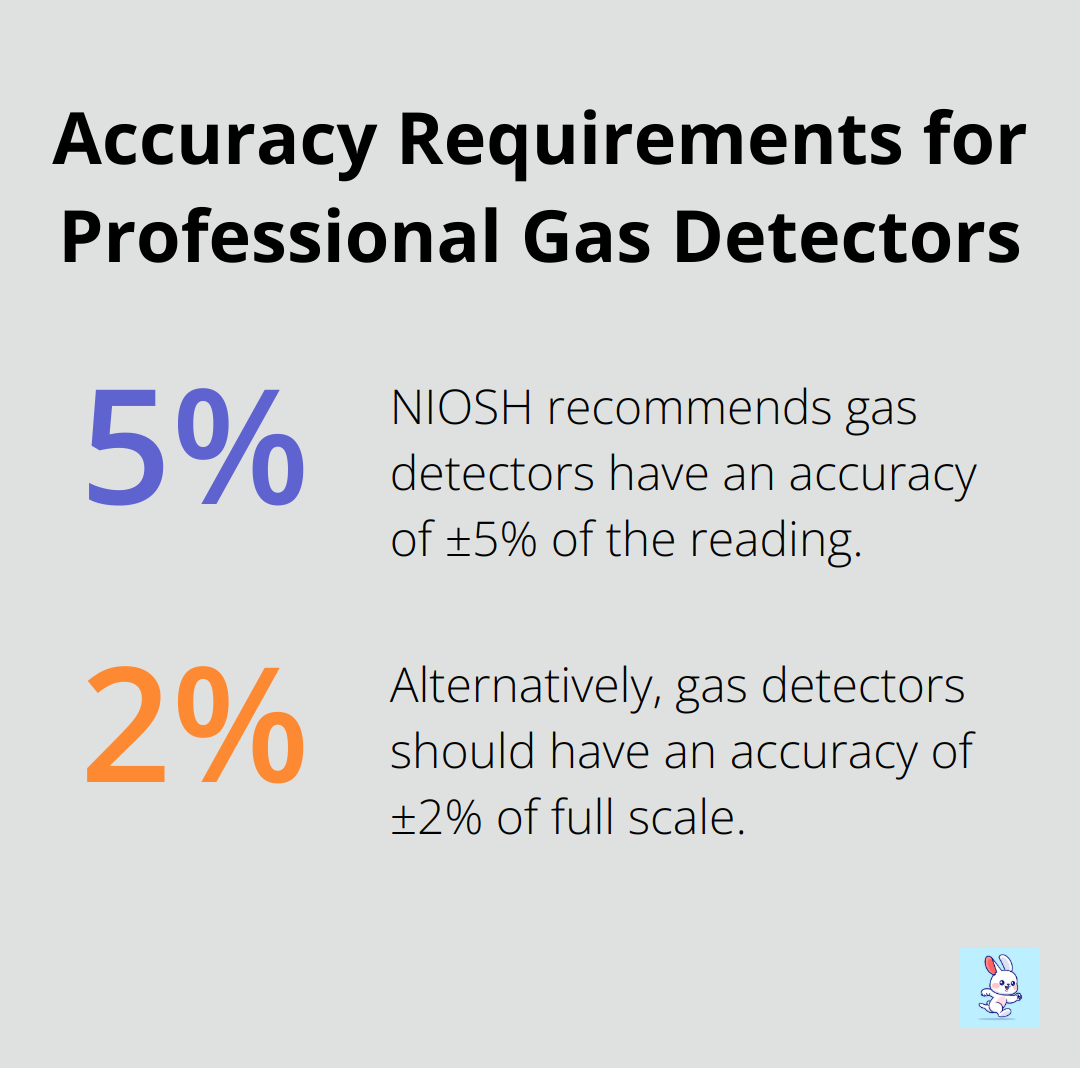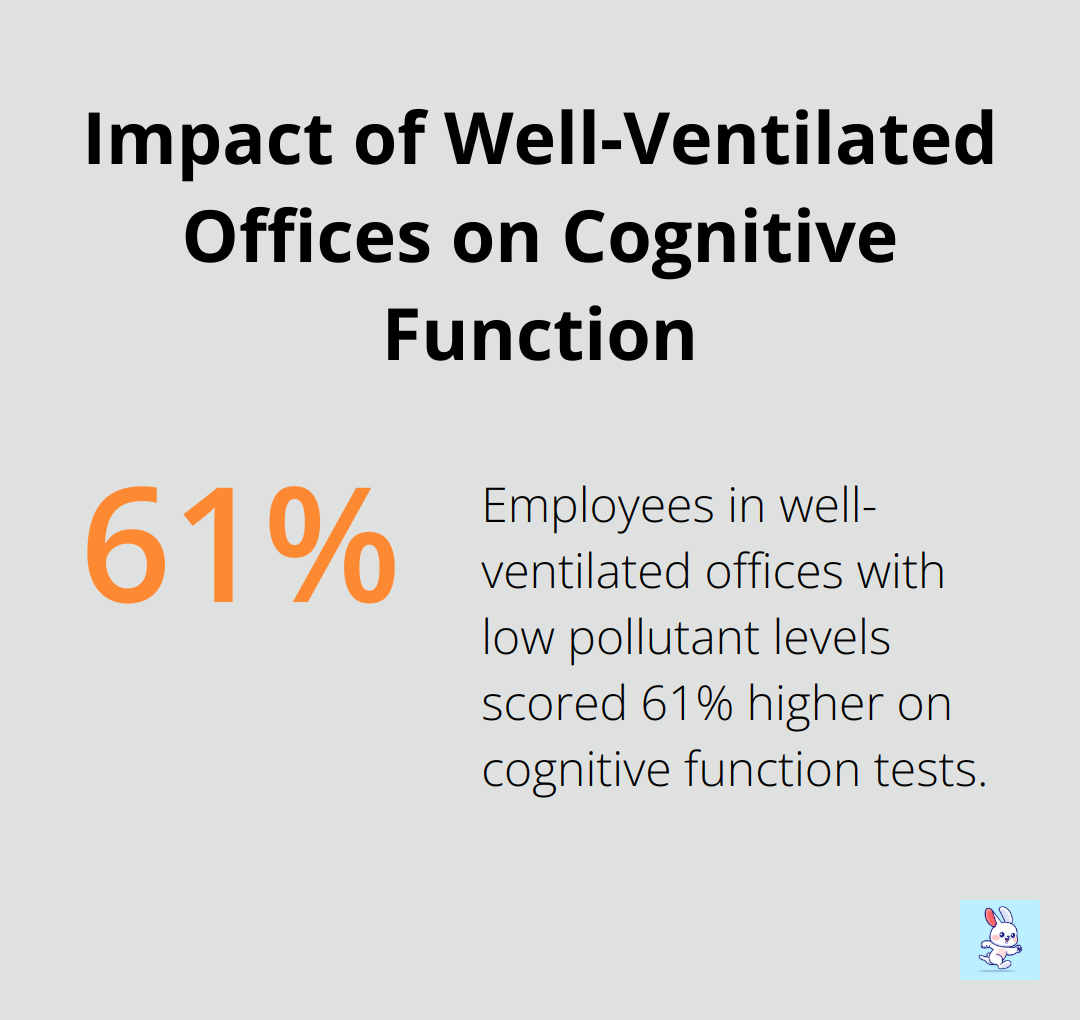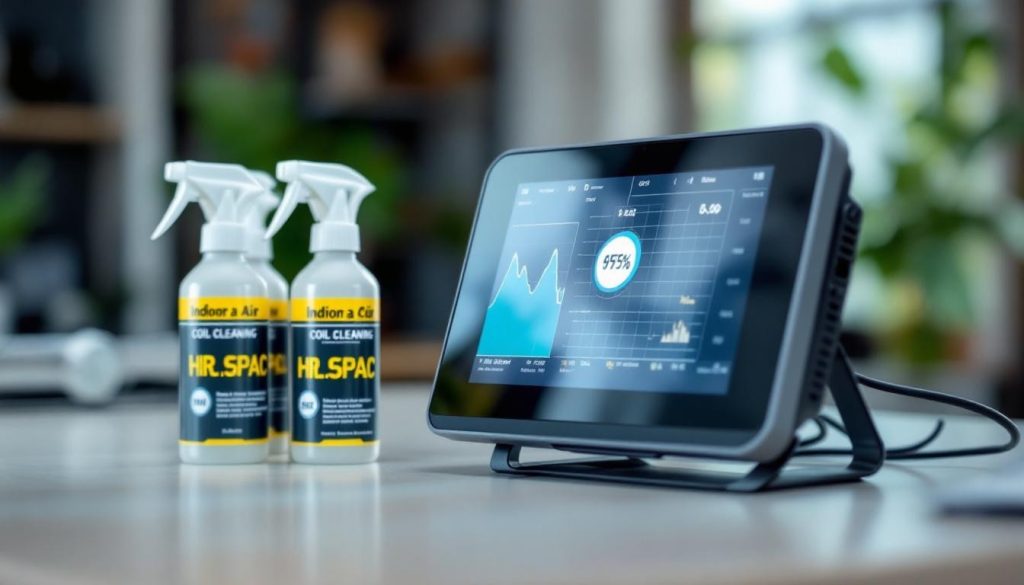At Cleaning Rabbit, we know that clean air is vital for health and productivity. Professional indoor air quality monitors are essential tools for maintaining a safe and comfortable environment.
These devices measure various pollutants, including particles, gases, and VOCs, as well as temperature and humidity. They also play a crucial role in optimizing HVAC systems, which can be enhanced with products like HVAC coil cleaning spray.
What Are Professional Indoor Air Quality Monitors?
Professional indoor air quality monitors are sophisticated devices that measure and track various pollutants and environmental factors in indoor spaces. These monitors serve as essential tools for maintaining healthy and safe environments in both residential and commercial settings.
Particle Counters: The Dust Detectives
Particle counters form a critical component of professional air quality monitoring systems. These devices measure the concentration of airborne particles of different sizes, typically ranging from 0.3 to 10 micrometers. The Environmental Protection Agency (EPA) reports that particles smaller than 2.5 micrometers (PM2.5) pose the greatest health risks as they can penetrate deep into the lungs.
Modern particle counters use laser technology to detect and count particles in real-time. This allows for immediate identification of potential issues, such as increased dust levels during construction or renovation activities. Some advanced models can even differentiate between organic and inorganic particles, providing valuable insights into the source of contamination.

Gas Detectors: Sniffing Out Invisible Threats
Gas detectors play a vital role in identifying potentially harmful gases in indoor environments. These monitors can detect a wide range of gases, including carbon monoxide (CO), carbon dioxide (CO2), nitrogen dioxide (NO2), and ozone (O3). According to the Centers for Disease Control and Prevention (CDC), carbon monoxide poisoning leads to over 20,000 emergency room visits in the United States annually.
Professional-grade gas detectors often use electrochemical sensors or infrared technology for accurate and reliable measurements. Many models feature multi-gas detection capabilities, allowing simultaneous monitoring of several gases. This proves particularly useful in industrial settings or areas with potential for multiple gas hazards.
Temperature and Humidity Sensors: Comfort and Mold Prevention
Temperature and humidity sensors play a critical role in maintaining optimal indoor air quality. These sensors not only ensure comfort but also help prevent conditions that promote mold growth and dust mite proliferation. The EPA recommends maintaining indoor relative humidity between 30% and 50% to minimize these risks.
Advanced temperature and humidity sensors often integrate with HVAC systems to automatically adjust conditions for optimal comfort and air quality. Some models also calculate the dew point, which proves crucial for preventing condensation and subsequent mold growth in buildings.
VOC Monitors: Tracking Chemical Pollutants
Volatile Organic Compound (VOC) monitors detect and measure the presence of harmful chemical vapors in indoor air. These compounds, emitted from various sources (including paints, cleaning products, and furniture), can cause both short-term and long-term health effects.
VOC monitors use advanced sensor technology to detect a wide range of compounds, often providing real-time data on concentration levels. This information allows facility managers and homeowners to identify potential sources of VOCs and take appropriate action to improve air quality.
Professional indoor air quality monitors provide accurate, real-time data on various pollutants and environmental factors. These devices enable proactive management of air quality issues, making them indispensable for facility managers, health and safety professionals, and homeowners concerned about indoor air quality. As we explore the key features to look for in these monitors, you’ll gain a deeper understanding of how to choose the right equipment for your specific needs.
What Makes a Professional Air Quality Monitor?
Professional air quality monitors stand out from basic models due to several key features. These features ensure the provision of accurate, reliable, and actionable data for optimal indoor air quality maintenance.
Precision and Accuracy: The Cornerstone of Reliable Monitoring
The foundation of any professional air quality monitor is its ability to provide precise and accurate measurements. High-quality sensors detect even minute changes in air quality parameters. Top-tier particle counters can detect particles as small as 0.3 microns with an accuracy of ±5%. Gas detectors should have a resolution of at least 1 ppm for most gases, with some capable of detecting concentrations as low as 0.1 ppm.
To ensure accuracy, professional monitors undergo rigorous calibration processes and adhere to industry standards. The National Institute for Occupational Safety and Health (NIOSH) recommends that gas detectors have an accuracy of ±5% of the reading or ±2% of full scale (whichever is greater). This level of precision is essential for compliance with occupational health and safety regulations and for making informed decisions about air quality management.

Real-Time Monitoring: Immediate Insights for Swift Action
Professional air quality monitors offer real-time data collection and analysis. This feature allows for immediate detection of air quality issues, enabling quick corrective actions. A sudden spike in VOC levels could indicate a chemical spill or the use of high-emission cleaning products, prompting immediate ventilation or evacuation if necessary.
Many advanced monitors now incorporate wireless connectivity, allowing for remote monitoring and alerts. This capability proves particularly valuable for facility managers overseeing multiple locations or for homeowners who want to keep tabs on their air quality while away. Some systems can even integrate with smart sensors or building management systems for automated responses to air quality changes.
Comprehensive Data Management: Logging and Reporting
Effective air quality management relies on more than just real-time data. Professional monitors offer robust data logging and reporting functions. The best devices store data for extended periods, ideally for several months or even years. This historical data helps identify trends, correlate air quality issues with specific events or activities, and demonstrate compliance with regulations.
The ability to generate detailed reports is equally important. Advanced monitors often come with software that creates customizable reports, including graphs, charts, and statistical analyses. These reports can be essential for presenting findings to stakeholders (building owners, health and safety committees, or regulatory bodies).
Calibration and Maintenance: Long-Term Reliability
Even the most advanced air quality monitors require regular calibration and maintenance to maintain their accuracy. Professional-grade devices have clear calibration procedures and schedules. Some monitors offer self-calibration features, while others may require periodic professional calibration.
Maintenance requirements vary depending on the type of monitor and its sensors. Electrochemical gas sensors typically have a lifespan of 1-3 years and require replacement after this period. Particle counters may need regular cleaning of their optical components to prevent false readings.
When choosing a monitor, consider the long-term costs associated with calibration and maintenance. Some manufacturers offer calibration services or replacement sensors, which can be more cost-effective than replacing entire units. Additionally, monitors with modular designs allow for easy sensor replacement, reducing downtime and maintenance costs.
The features discussed above set professional air quality monitors apart from basic models. In the next section, we will explore how these advanced monitoring capabilities translate into tangible benefits for health, safety, and productivity in various indoor environments.
How Professional Air Quality Monitors Enhance Health and Safety
Professional air quality monitors significantly improve health and safety in various indoor environments. These advanced devices offer numerous benefits beyond simple air quality measurement.
Swift Identification of Dangerous Pollutants
Professional air quality monitors excel at quickly identifying harmful pollutants. The Environmental Protection Agency (EPA) reports that most pollutants affecting indoor air quality come from sources inside buildings, although some originate outdoors. These devices detect sudden spikes in pollutants like carbon monoxide or volatile organic compounds (VOCs) within seconds.
This rapid detection capability proves invaluable in industrial settings. A manufacturing plant in Ohio recently avoided a potential disaster when their air quality monitor detected a sudden increase in toxic gas levels, allowing for immediate evacuation and prevention of worker exposure.
Compliance with Regulatory Standards
Professional air quality monitors help maintain compliance with occupational health and safety standards. The Occupational Safety and Health Administration (OSHA) sets strict limits on exposure to various airborne contaminants in the workplace. For instance, OSHA mandates that carbon monoxide levels should not exceed 50 parts per million (ppm) over an 8-hour period.
These devices continuously monitor and log air quality data, providing concrete evidence of compliance. This data proves invaluable during inspections and can protect businesses from potential fines or legal issues. A survey by the National Safety Council found that companies using professional air quality monitors were 30% less likely to face OSHA violations related to air quality.
HVAC System Optimization
Professional air quality monitors can significantly enhance the efficiency of HVAC systems. These devices provide real-time data on temperature, humidity, and pollutant levels, enabling smart HVAC systems to adjust their operation dynamically. This approach not only improves air quality but also reduces energy consumption.
A large office building in New York City demonstrated that integrating air quality monitors with their HVAC system resulted in a 15% reduction in energy costs while maintaining optimal indoor air quality. This integration allowed the system to increase ventilation only when necessary, based on actual air quality data rather than preset schedules.
Improved Workplace Productivity
High-quality indoor air directly correlates with increased workplace productivity. A Harvard study found that employees in well-ventilated offices with low levels of indoor pollutants and CO2 scored 61% higher on cognitive function tests compared to those in offices with typical levels of indoor pollutants.
Professional air quality monitors help maintain optimal air quality conditions, leading to reduced sick days and improved employee performance. A tech company in California reported a 12% increase in employee productivity after implementing a comprehensive air quality monitoring system (coupled with appropriate air purification measures).

Enhanced Occupant Comfort and Well-being
Beyond health and safety, professional air quality monitors contribute to overall occupant comfort and well-being. These devices help maintain ideal temperature and humidity levels, reducing discomfort and potential health issues related to poor indoor air quality.
A survey conducted in a large residential complex found that 85% of residents reported improved comfort and satisfaction after the installation of professional air quality monitoring systems. This improvement led to a 20% reduction in air quality-related complaints and a notable increase in tenant retention rates.
Final Thoughts
Professional indoor air quality monitors provide essential tools for maintaining healthy, safe, and productive indoor environments. These devices offer accurate, real-time data on various pollutants and environmental factors, which enables proactive management of air quality issues. They allow swift identification of dangerous pollutants, ensure compliance with regulatory standards, and optimize HVAC systems for improved energy efficiency.
Professional air quality monitors contribute significantly to enhanced workplace productivity and occupant comfort. They help create environments where people work more effectively and feel more comfortable by maintaining optimal air quality conditions. When choosing monitors, it’s important to consider specific needs, environment, types of pollutants to monitor, area coverage, and data management requirements.
We at Cleaning Rabbit understand the importance of clean air for health and productivity. Our expertise in air duct cleaning, HVAC sanitation, and air quality assessments (including the use of HVAC coil cleaning spray) complements the use of professional air quality monitors. Regular maintenance and calibration of these devices ensure their continued accuracy and reliability.

